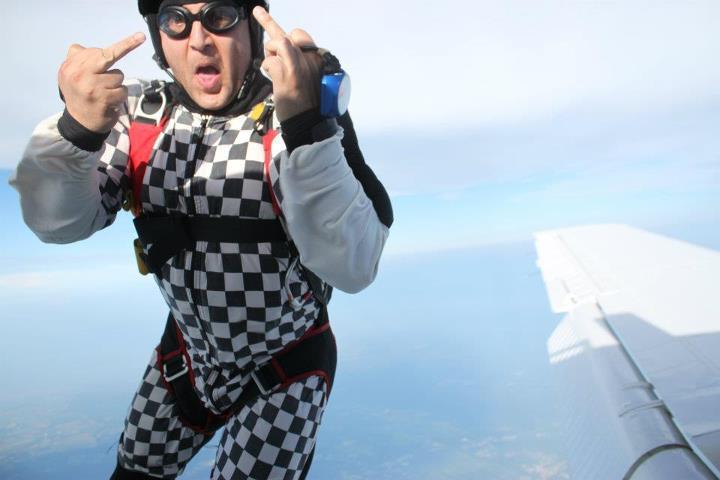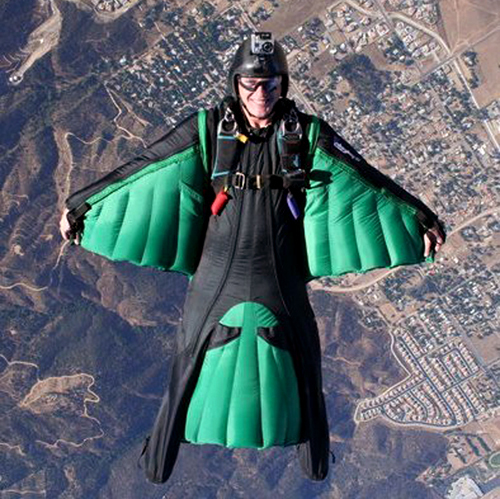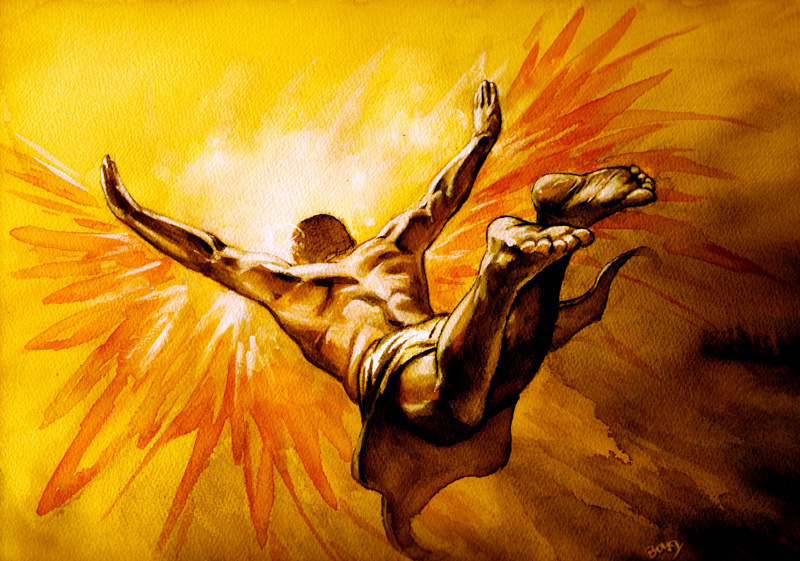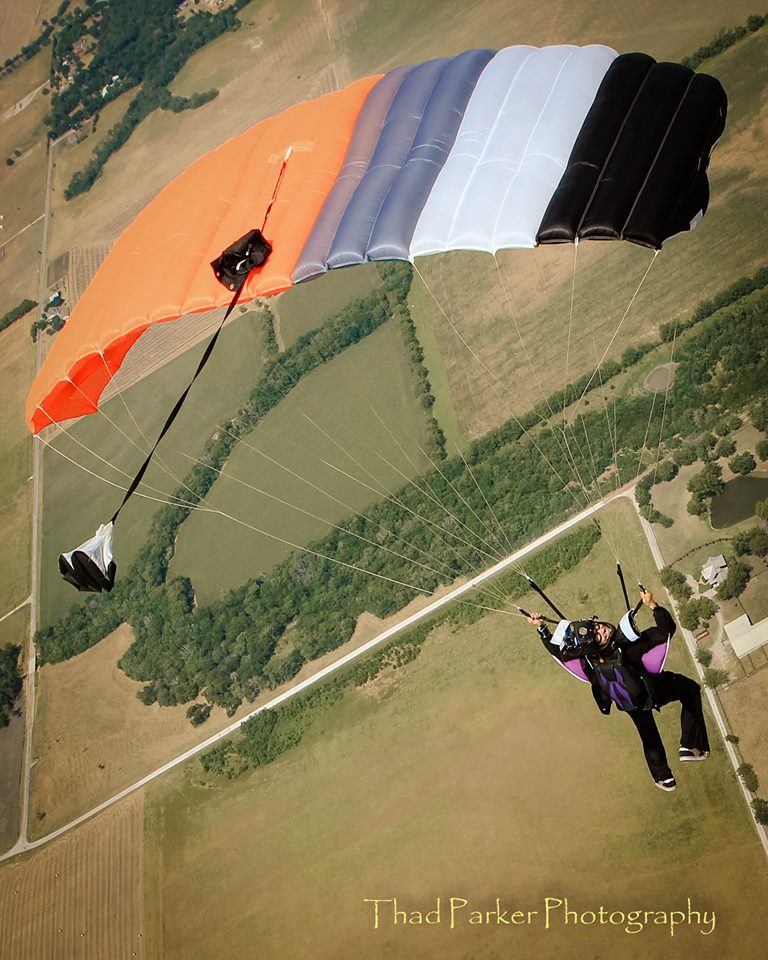Recommended Posts
bluetwo 0
Somebody stop me if I'm wrong but don't the two designs differ greatly? In terms of square footage and how that compares to a jumpers wingloading I mean.
Unless I'm wrong going from say, a 260 9 cell to a 230 7 cell would be a WAY different change than just downsizing 30 square feet on a 9 cell design.
You know you want to spank it
Jump an Infinity
shah269 0
And Yes..slider behind head.
Major difference between a 7 and a 9? No clue?
I looked saw lots of different ideas, read a few web pages. Looks as if a 7 is thicker and has less forward movement.
The only thing that falls from the sky is birdshit and fools!
bluetwo 0
QuoteYes...chest strap loose...not open
And Yes..slider behind head.
Major difference between a 7 and a 9? No clue?
I looked saw lots of different ideas, read a few web pages. Looks as if a 7 is thicker and has less forward movement.
Yep, 7 cells definitely have less glide. They're used for accuracy a lot of times.
Plus I'm pretty sure, but not positive, that an experienced skydiver using a 150 9 cell would want to use a 200 7 cell (for example).
I'm hoping somebody will chime in with how accurate I am on that.
DocPop 1
I agree with the comments above saying demo, demo, demo. Try before you buy.
~ CanuckInUSA
QuotePlus I'm pretty sure, but not positive, that an experienced skydiver using a 150 9 cell would want to use a 200 7 cell (for example).
I'm hoping somebody will chime in with how accurate I am on that.
Not accurate at all, given all other things are the same. If you're talking modern Z-po 9 cell to modern Z-po 7 cell, there is no 'conversion factor' needed.
jsreznor 0
You guys really need to go read the SIM if you don't know the fundamental differences between a 7 cell and a 9 cell canopy.
pchapman 262
As the canopy swings back during the flare, a loose chest strap allows the jumper to move their body more upright for touchdown. There's less of a "about to fall over backwards" angled-back body position on landing.
Some people don't care for the looser feeling, some really like it, even under a slow canopy.
QuoteMajor difference between a 7 and a 9?
Sometimes the 7 will have a slightly steeper glide at full flight. However, this can be overcome with the application of brakes or rear risers (when traveling with the wind).
Overall, for your purposes, either 7 or 9 cell would be fine for you. I would be weary of commiting to a rig with a 210 if you have only put a handful of jumps on a 260 thus far. If the container is big enough to hold a 220 or 230, then it might be a safer bet, but if the 210 is the largest it can hold, you're locked into that size, even if you find that a 220 or 230 is more your speed.
Also, what size is the reserve? Again, if it's a 190 or 200 sq ft reserve, and you find a 220 or 230 suites you, you're stuck with a smaller reserve than you're comfortable jumping. If anything, you want to go the other way with it, and a have a reserve bigger than the main you feel is right for you.
If I recall, the last rig you were trying to buy was a 280 or 290, and you were in a panic because the pickings were slim in that range. Now that you have 'come to your senses', and are considering a more conventional sized canopy, the assortment of applicable used rigs has expanded exponentially. Even if you target anything in the 210 to 230 range, they're out there, and all of the harnesses will be built 'man size' as there are very few ladies or lightweights on a 200+ sq ft canopy.
The end result is that you can take your time, and not be strapped down to this one rig. Work your way down through the student rigs until you are comfortable on the 240. Another advantage you have is that a student rig that holds a 240 will aslo hold a 230 or 220, so when you are ready you can demo canopies in that size by putting them in the student rig. You'll pay for the demo, the rig rental, and to have a rigger swap out the canopies, but it's worth it. To be able to actually jump what you'll be buying, and make sure that it 'feels' good to you is priceless.
The universal rule in skydiving is never to buy anything you are not qualifed to jump, or that doesn't fit you at the time of purchase. People have all sort of 'plans' to lose weight, or pound out jumps, or develop skills, but all of those things may or may not happen. When you are ready to buy a rig, look at your skills and needs at that time, and find a rig that works for you then. It will save you time, money, and headaches later on.
Zlew 0
Quote
Somebody stop me if I'm wrong but don't the two designs differ greatly? In terms of square footage and how that compares to a jumpers wingloading I mean.
Unless I'm wrong going from say, a 260 9 cell to a 230 7 cell would be a WAY different change than just downsizing 30 square feet on a 9 cell design.
This could splinter off into an entire other thread....but: Yes 7 cells fly differently than 9 cells. However, the newer 7 cells are much more similar to 9 cells than the "old" 7 cells. With tapered edges, zero P fabric, and good designs, it doesn't have to be that big of a difference. A Spectre is nothing like an old PD7, or a Parafoil for example. As I hinted to in my first post, there will be lots of differences (like glide, toggle pressure, they way they turn etc.) but most of them will not be that big of a deal. Most of what you will notice is things being faster overall. As to if going from a 260 to a 230 is a big jump...well that really depends on the jumper. IMO, going from a sub 1:1 260 to a 230 isn't "extreme" by any means assuming the pilot doesn't have his or her head all the way up their ass.
The way the square parachute design evolved did make a big difference in 9 cells and 7 cells for a while. When I started, only the old timers were jumping 7 cells, and they flew and landed like crap and couldn't really be wingloaded. Then then they started making the Triathlon and it breathed new life into 7 cells. PD soon followed with the Spectre, Icarus with the Omega, around 2000. In the last 10 years there have been a lot of advancements that have pulled 7 cells into the "higher performance" world. After all, the FX and Velo is based on a 7 cell platform (hehe, did I just start yet another wild tangent for this thread?).
bluetwo 0
shah269 0
I plan on another 5 or so jumps on the 260.
And then 5 or so on the one smaller and so on and so on.
As I understand it and was told by my rigger. It's a 210 main and a 200 reserve. So it's close.
The reason I'm buying this rig are three fold.
One I know the owner, and he has taken great care of his equipment. It still looks very good for it's age.
Two he is willing to work with me on the price. The price does not inclue the AAD but with the AAD I should have enough money for the equipment and lunch and a good number of jumps.
And last, me all the equipment and a bottle of beer come to 200lbs so I'm a little better than 1:1
As for comming down from the 280 mark. I would have to say my amazingly soft landing on the 260 in the guys fron yard. I just stood there looked around and realized I just landed in a yard no bigger than the hanger and I did it while in full controll. And I did it standing up! I quickly sat down and pulled the euipment up so that it wonldn't get damaged but...I was just amazed!
The only thing that falls from the sky is birdshit and fools!
wolfriverjoe 1,346
It flies as aggressively or gently as I want it to. If I crank in a lot of front riser, then toggle whip the opposite way, I'm going to be swinging around pretty wildly (and to be perfectly clear, I don't do this stuff unless I am sure that there is not going to be a traffic conflict, I certainly don't do it at a DZ where there is a large number of canopies in the sky with me).
But if I don't feel like going fast, and just want to hang out in the sky (or I'm in a situation where I am worried about other canopies in the air), I can hang in partial brakes and stay up for a long, long time. Flat turns, slow flight, all the "slow and gentle" stuff is very comfortable and easy.
I can (and have) land it pretty much anywhere I want. My off landings were all "non-events" because of that. The flare isn't all that spectacular, but if I fly it all the way to the end (not just until I reach the ground) it does fine.
Modern 7-cells and 9-cells are pretty similar. You have some of the aerodynamic issues that come with the different aspect ratios, but I really don't think you have the skill or experience to be able to tell the difference if you were given a blind test. I know I don't. I've flown a 9-cell a few times, and although there were differences, they were not that big.
"~ya don't GET old by being weak & stupid!" - Airtwardo
shah269 0
That's about what my rigger and instructors told me about this wing.
Student wing +1 so nothing nutty and nothing dull but still safe.
The flare I was told was not the best but no worse than the student ZP/F111 wings.
OK cool! ![]()
The only thing that falls from the sky is birdshit and fools!
Quoteif you were given a blind test.
Now, THAT would be interesting!
I think we're all Bozos on this bus.
Falcon5232, SCS8170, SCSA353, POPS9398, DS239
Just be carefull, I was surprised how much the flight charecteristics changed with just a 10% change in canopy size. I started on a PD NAV 220 and worked down to a NAV 200 and just started jumping my first "sport" canopy, a Sabre 2 190.
I don't know exactly what is entailed in a "tune", but I'm told that student canopies are "tuned" to make them less aggressive and that the NAV canopies are docile to start.
A sport cannoy is awesome to fly and I wish took advice and started jumping one sooner, but I'm also glad I took my time. They go a lot faster and the inputs go a lot farther....so be careful. Hitting the ground hard sucks.![]()
Now that care and caution have been addressed...![]() ...have fun! Sport canopies rock!
...have fun! Sport canopies rock!
shah269 0
The only thing that falls from the sky is birdshit and fools!
Yeah. Late night drinking and I'm not caffinated...working with about two brain cells.![]()
Toggle inputs result in sharper turns, more dynamic moves, and everything just happens faster, etc. For instance, if you flare too strong on the Sabre 2 you can pop back in the air up to 10 feet.
Excuse the brain fart, but if your confused about it (and not just screwing with me ![]() ) someone else could explain much better than me.
) someone else could explain much better than me.
shah269 0
The only thing that falls from the sky is birdshit and fools!











They both indicated body position will have to be better when going closer to 1:1 and that turns will be tighter. Toggle pressure will be hit or miss depending on the design. They indicated that the flare height will be about the same but expect things to be moving faster.
All of which I understand.
I'm also not going to buy this until I actually jump it next year. The seller is kind enough to allow me to place as bit of a down payment and hold it for me until I have downsized.
The things I'm looking for from you guys if you can provide would be, since this is a 7 cell and I'm use to jumping 9 cell ZP/F111's if there are little things I could do or should know to have a safer ride.
That's all.
Case in point, one key suggestion was to loosen the chest strap to allow the smaller canopy to fly flatter. One thing we don't do with student canopies due to their size.
As for looking online I found this.
http://ozcrw.tripod.com/crw_canopies.htm
But reading this stuff makes everything sound perfect.
The only thing that falls from the sky is birdshit and fools!
Share this post
Link to post
Share on other sites